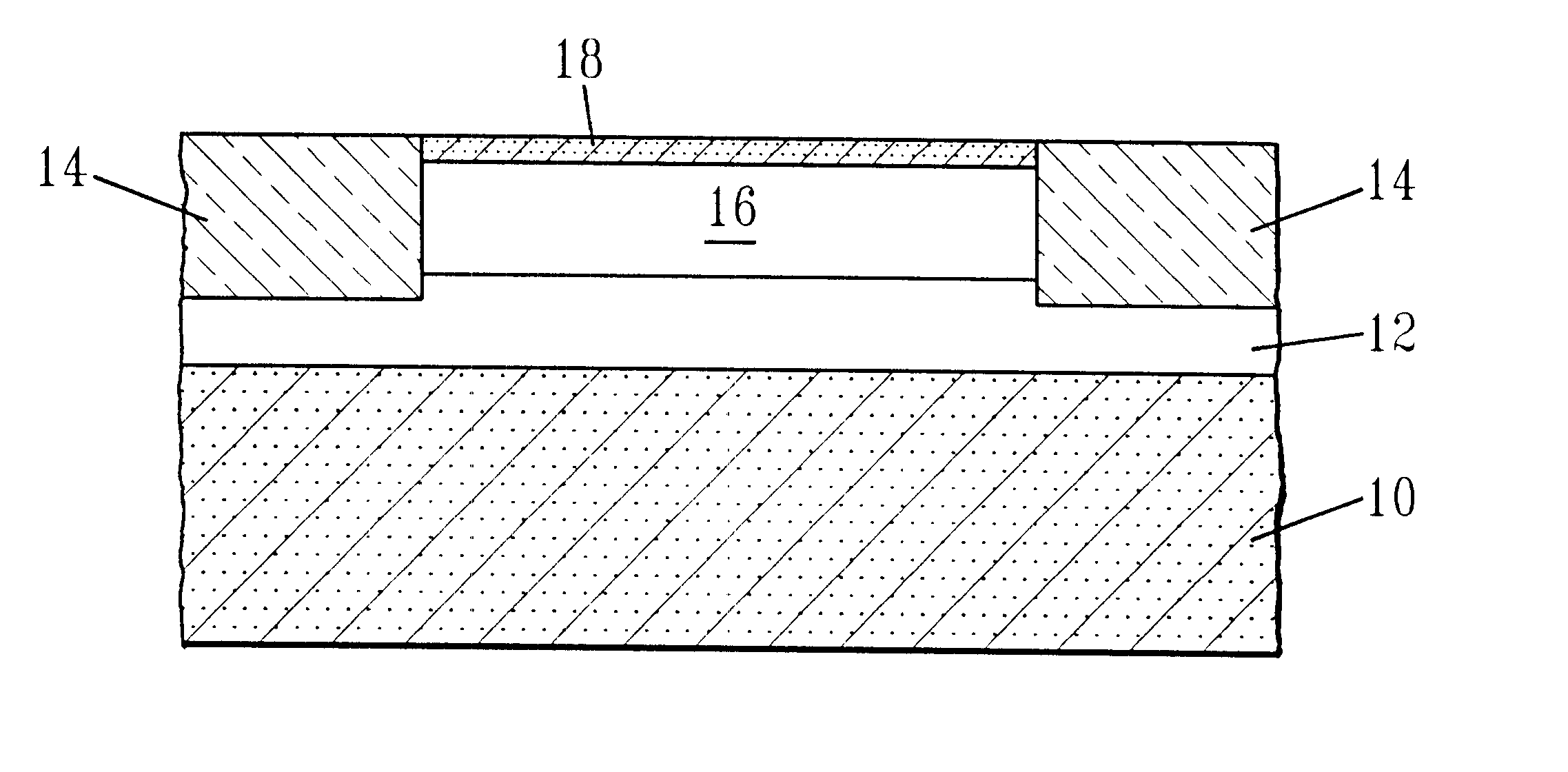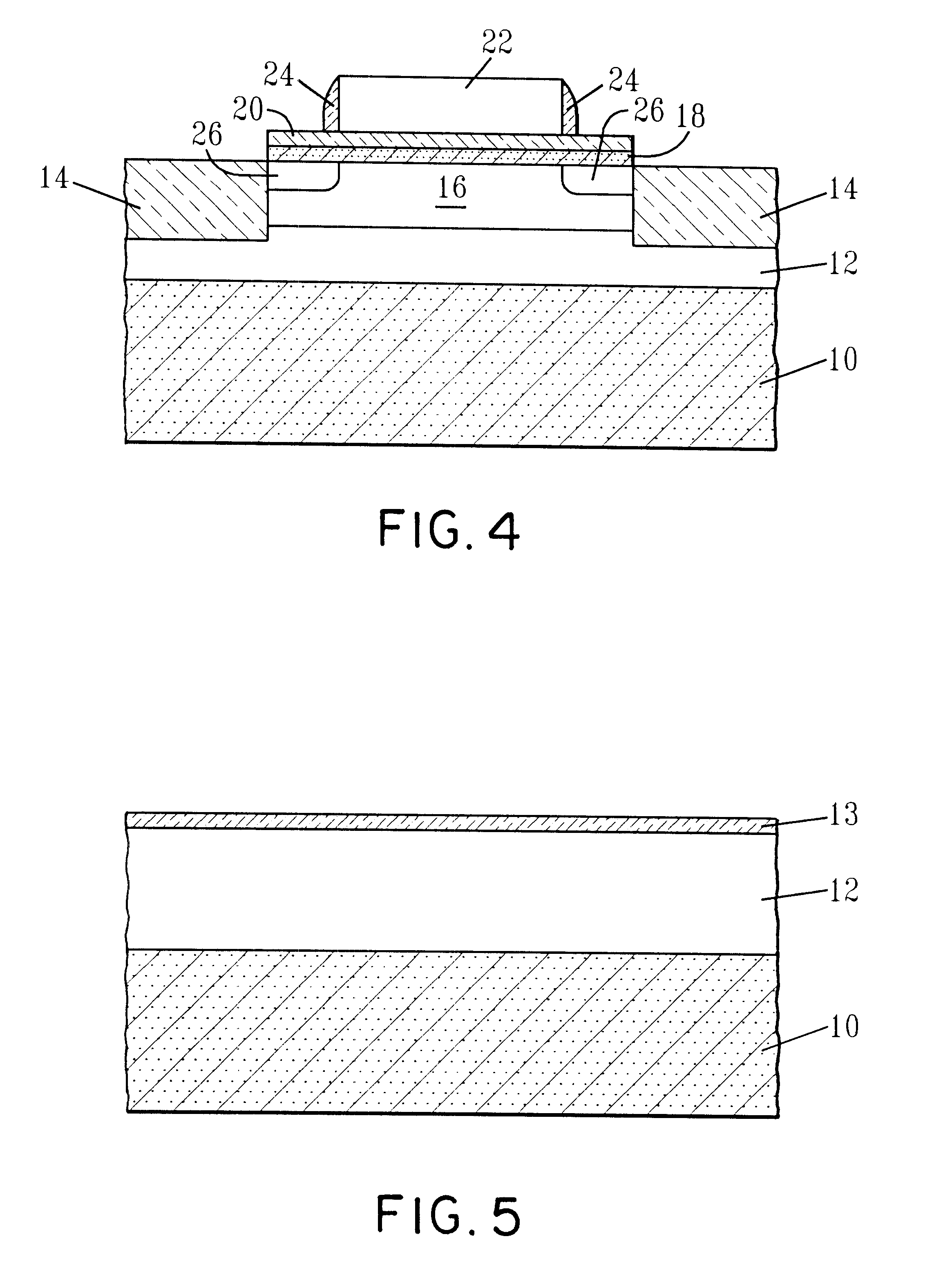Method to fabricate a strained Si CMOS structure using selective epitaxial deposition of Si after device isolation formation
a technology of strained si and cmos, which is applied in the direction of semiconductor devices, electrical equipment, transistors, etc., can solve the problems of reducing the performance enhancement, strained layer needs to be protected from high-temperature processing, and strained layer degrading device properties,
- Summary
- Abstract
- Description
- Claims
- Application Information
AI Technical Summary
Benefits of technology
Problems solved by technology
Method used
Image
Examples
Embodiment Construction
The present invention will now be described in more detail by referring to the drawings that accompany the present application. It is noted that in the accompanying drawings like reference numerals are used for describing like and / or corresponding elements.
Reference is first made FIGS. 1-3 which illustrate the basic processing steps of the present invention. Specifically, FIG. 1 shows a basic structure that is formed after conducting step (a) of the present invention, i.e., after forming relaxed SiGe layer 12 on a surface of substrate 10. The relaxed SiGe layer is formed on a surface of substrate 10 utilizing any conventional process that is capable of forming such a layer on a substrate. For example, the relaxed SiGe layer may be formed utilizing a conventional growing process such as described in U.S. Pat. No. 5,158,907, a conventional Czochralski crystal pulling process, or epitaxy by solid phase regrowth such as described in U.S. Pat. No. 5,847,419; the contents of the each of t...
PUM
 Login to View More
Login to View More Abstract
Description
Claims
Application Information
 Login to View More
Login to View More - R&D
- Intellectual Property
- Life Sciences
- Materials
- Tech Scout
- Unparalleled Data Quality
- Higher Quality Content
- 60% Fewer Hallucinations
Browse by: Latest US Patents, China's latest patents, Technical Efficacy Thesaurus, Application Domain, Technology Topic, Popular Technical Reports.
© 2025 PatSnap. All rights reserved.Legal|Privacy policy|Modern Slavery Act Transparency Statement|Sitemap|About US| Contact US: help@patsnap.com



